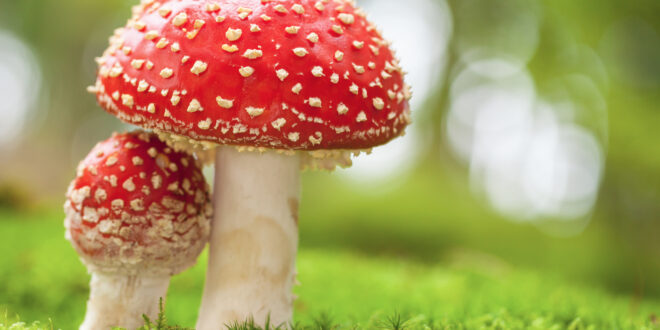In the realm of myth and magic, one mushroom stands apart as an enchanted icon: the Amanita muscaria, or Fly Agaric. This enigmatic fungus has captivated imaginations for centuries with its vivid red and white speckled caps and dream-like effects. Beyond its storybook allure lies a history rich in medicinal and psychoactive use.
This article explores Amanita muscaria’s fascinating cultural, medicinal, and mystical roles throughout the ages.
Amanita Muscaria: A Psychoactive Forest Beauty
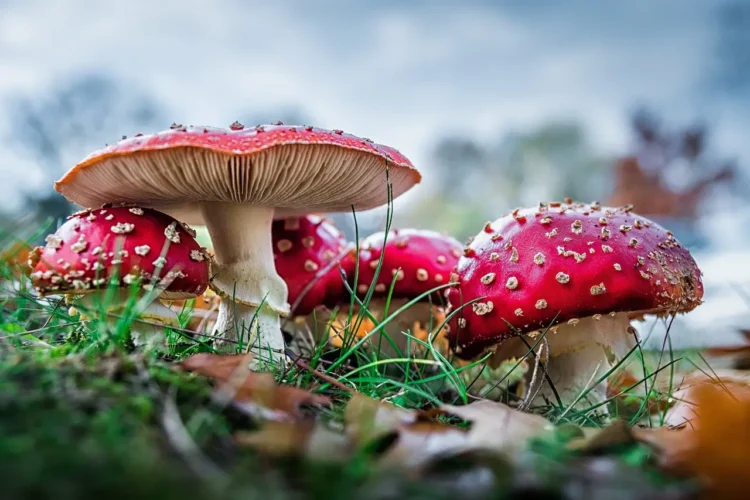
Amanita muscaria’s giant, bright red body immediately grabs the attention of anyone who sees it. But the striking beauty comes from psychoactive chemicals that give Amanita muscaria hallucinogenic effects, which begs the question: Is Amanita muscaria legal?
The short answer is yes because, unlike traditional “magic” mushrooms, Amanita muscaria is largely unregulated in the United States. Amanita muscaria is a perfect candidate for fantasy, given its stunning appearance. This mushroom also grows in areas renowned for fairy tail lore.
Amanita mushrooms thrive in the mossy forests of Europe and North America, like the Black Forest in Germany, which gets its name from its dense canopy. The Black Forest is also the magical setting and inspiration for many Grimm brothers’ fables.
Amanita Muscaria’s active ingredients
Amanita muscaria contains a mix of psychoactive alkaloids (active ingredients) that vary widely from mushroom to mushroom. The results can be unpredictable and potentially toxic.
Interestingly, it’s this toxicity that gives the mushroom its famous moniker, ‘Fly Agaric.’ Folklore has it that crumbling the mushroom into milk would attract flies and serve as an effective insecticide, eliminating the pests swiftly and surely.
Let’s break it down:
Muscimol: Muscimol is Amanita’s primary psychedelic compound. It has the highest safety profile, delivering euphoric, sedative, and soothing effects.
Ibotenic acid: Ibotenic acid is a neurotoxin found in Amanita mushrooms in varying quantities. Consuming too much can cause hallucinations and adverse effects like confusion, vomiting, and nausea.
Muscarine: Muscarine occurs in Amanita in trace amounts, but it has toxic properties and can contribute to extremely rare cases of Amanita poisoning.
Traditional indigenous practices often involved drying or boiling Amanita to neutralize its more harmful elements. But consumers should never try processing Amanita mushrooms on their own. The safest way to consume Amanita is through purified extracts with high muscimol, low ibotenic acid, and zero muscarine content.
From Siberia to Europe: Tales of Hallucinogenic Powers
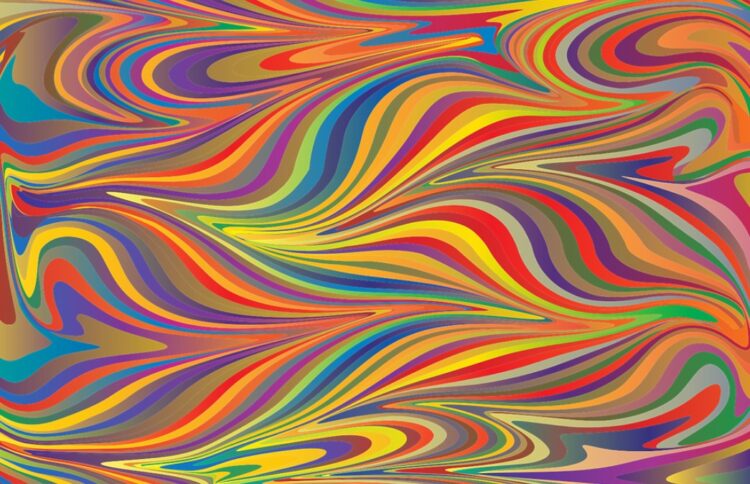
Amanita muscaria’s reputation for killing flies dates back to the 13th century. But one of the first people to report its psychedelic effects was a Swedish soldier named von Strahlenburg in 1730.
Von Strahlenburg, a Siberian who spent 12 years as a prisoner of war, noticed that the local Koryak people would use the mushroom in special ceremonies. The rich people would trade furs for these mushrooms, boil them in water, and then drink the liquid to get a buzz.
The poor people would join in by catching and drinking the urine of those who had consumed the mushroom, as it contained psychedelic effects.
Another Russian traveler, Krasheninnikov, gave more details on the mysterious fungi. Krasheninnikov said people would soak the mushroom in a liquid or swallow it whole. Different people reacted differently—some felt like they were floating, others had visions, and some even felt scared. This mushroom wasn’t just a fly-killer; it was part of cultural practices, like Shamanic rituals.
Later, stories also discussed Siberian Shamans and reindeer herders using Amanita for energy and focus. These tales have even been linked to the myth of Santa Claus, who is said to ride a sleigh pulled by reindeer, just like the Shamans.
Other accounts began to crop up, such as from Polish traveler Joseph Kopék, who wrote a firsthand account in his diary in 1837. He fell ill with a fever and was given Amanita muscaria as a cure. He took a small amount and experienced a long and healing sleep. Then he took a second, higher dose, describing effects filled with:
- “The most attractive gardens where only pleasure and beauty seemed to rule.”
- Reliving swathes of his childhood
- Re-encountering friends from throughout his life
- The sense of an epic voyage into another world
Brothers Grimm: Preserving Folk History Through Nature
In the Victorian era, Amanita muscaria established itself in Britain as the stock mushroom of fairyland. During this time, the Brothers Grimm became fascinated with the rate at which people were moving out of the country and into cities.
They feared the migration would dismantle centuries of folk stories, songs, and oral histories. So, they placed all their effort toward uncovering stories from the past and imbuing them with a romantic quality.
The Brothers Grimm became “folk collectors,” moving away from modern times and into ancient enchantment. They took inspiration from pagan celebrations where mushrooms were used as magical symbols.
Amanita muscaria mushrooms became a constant pictorial motif and decoration in their books. Around this time, the mushroom began to appear on Christmas cards and was associated with cheer and good luck. By the mid-19th century, Amanita muscaria had become synonymous with fairy tales.
The “Wonder” in Alice in Wonderland
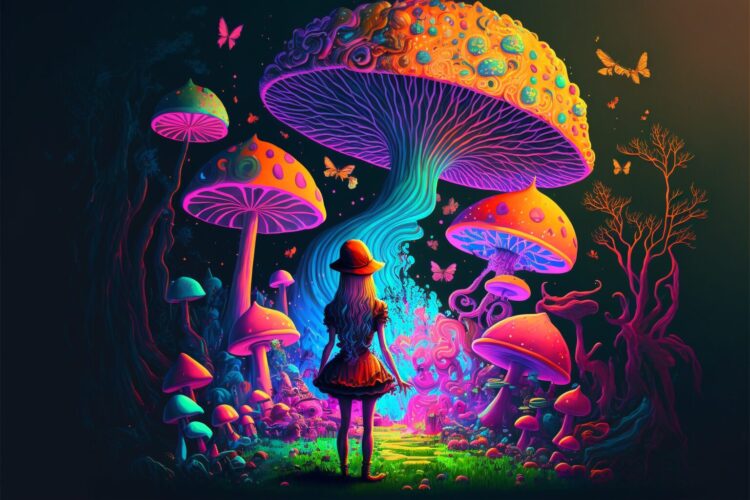
Many believe Lewis Carroll’s iconic use of mushrooms in Alice’s Adventures in Wonderland best captured the spirit of Amanita muscaria. It also led some to wonder: Does the Victorian fairy tradition, which seems to have an innocent exterior, operate as a playbook for using mushrooms and plants as psychedelic substances?
In the story, Alice famously meets a caterpillar sitting on a mushroom, who tells her that the fungus is the key to navigating through her strange journey, saying: “One side will make you grow taller, the other side will make you grow shorter.”
Today, many associate Alice in Wonderland with hallucinogenic drugs, but magic mushrooms were not readily available when Carroll wrote the story. It’s more likely that Carroll, like the Brothers Grimm, looked to intriguing legends from the far north to help put the “wonder” in his story.
Officially, the caterpillar sits on an unidentified mushroom. Still, it’s not a stretch to imagine the Fly Agaric as its inspiration, given what we know now about Amanita muscaria and Lewis Carroll.
- Carroll didn’t have the best health. He suffered from insomnia and migraines, so he became fascinated by unusual states of consciousness and alternate remedies, including psychoactive plants.
- Before writing the story, Carroll allegedly visited a library that had just gotten a copy of a groundbreaking drug survey, The Seven Sisters of Sleep (published in 1860). It had a chapter on the Fly Agaric entitled “The Exile of Siberia.”
- Carroll was particularly interested in Russia, the only country he ever visited outside Britain.
The Bottom Line
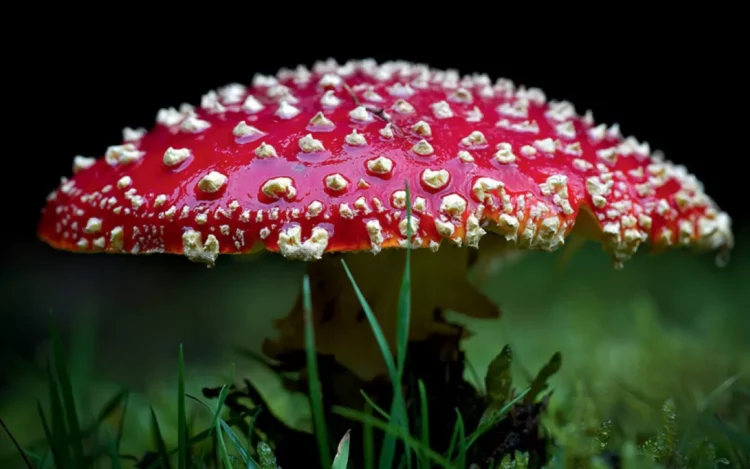
Almost every aspect of Amanita muscaria, from its bold red color to its history in Shamanic rituals, makes it a beautiful yet strange fungus. Ancient cultures used it in religious ceremonies and as a traditional medicine.
European fantasy and folklore authors harnessed tales of its magical effects to make it a symbol of enchanting fairy tales. Despite its intrigue, this fungus is incredibly unpredictable and can be poisonous. In the real world, consumers should proceed cautiously and only consume lab-tested extracts from verified sellers.
 Hi Boox Popular Magazine 2024
Hi Boox Popular Magazine 2024
